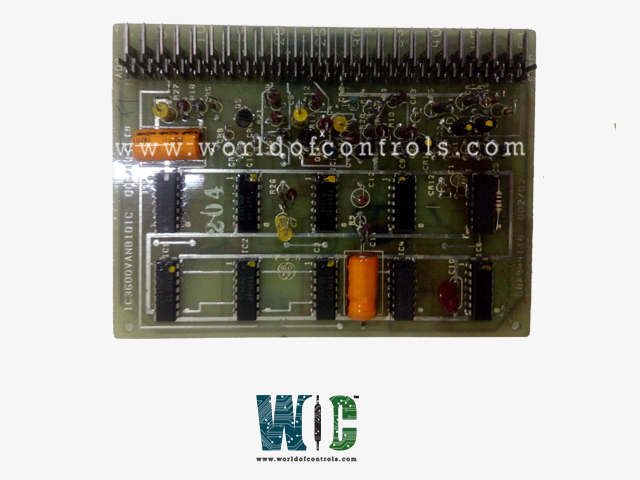
World Of Controls understands the criticality of your requirement and works towards reducing the lead time as much as possible.
IC3600VANB1 - Annunciator Control Card is available in stock which ships the same day.
IC3600VANB1 - Annunciator Control Card comes in UNUSED as well as REBUILT condition.
To avail our best deals for IC3600VANB1 - Annunciator Control Card, contact us and we will get back to you within 24 hours.
Part No: IC3600VANB1
Manufacturer: General Electric
Function: Annunciator Control Card
Series: Mark I and II
Repair: 3-7 Day
Availability: In Stock
Country of Manufacturer: United States (USA)
IC3600VANB1 is a Annunciator Control Card developed by GE. It is a part of Mark I and II control system. It is designed to manage and convey information about system states, alarms, and anomalies through signals. They are tasked with processing input signals from various sensors, detectors, or other monitoring devices, and then generating corresponding output signals for display and alerting purposes. These cards are designed to seamlessly integrate into the broader control system architecture. They often feature standardized communication interfaces, making them compatible with various control systems and protocols.
WOC is happy to assist you with any of your GE requirements. Please contact us by phone or email for pricing and availability on any parts and repairs.
What is IC3600VANB1?
It is a Annunciator Control Card developed by GE
What is the role of the VANB card in the annunciator control system?
It is responsible for controlling and transmitting signals to the VANA card. It also houses the driver for relay 30X, which is crucial for sounding the alarm bell. Additionally, it generates a flashing signal known as FL, distributed to all VANA cards.
How does the card indicate a normal system state?
In the absence of alarm conditions, the card sets the output AHD to 1. This serves as a flashing permissive signal to all VANA cards, indicating that the system is in a normal state.
What happens when an alarm or fault is detected in the system?
When a fault is detected, typically indicated by a 1 on the input L, the VANA receives a flashing signal on LT, causing the corresponding indicator light to flash. Simultaneously, the output AH on the VANA changes to 0, which initiates specific actions.